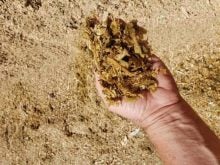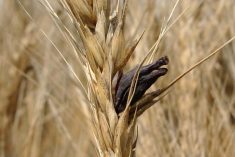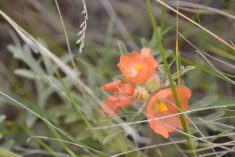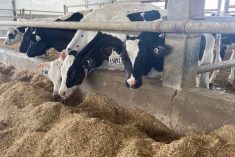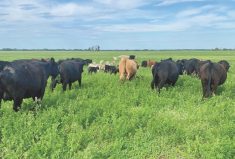Agriculture and Agri-Food Canada (AAFC) researchers have discovered a gene in alfalfa that could help to make the crop more drought resistant.
A team of researchers, led by Dr. Abdelali Hannoufa at AAFC’s London Research and Development Centre in Ontario, working in collaboration with industry partner, Forage Genetics International in the United States, discovered the gene called microRNA156.
MicroRNA156 “is a master gene regulator,” says Hannoufa. “It functions by regulating a network of other genes, called downstream genes, which control yield, stress tolerance, and other traits.”
Read Also

Harvest wraps up and fall work begins
At the Eppich famly ranch in western Saskatchewan, the fall harvest was successful with few breakdowns, cows and calves have been sorted and a new tractor has arrived
The gene works in a number of ways to make the alfalfa plant more drought tolerant. “In alfalfa, we found that this gene causes certain effects that make the plants more resistant to drought stress,” says Hannoufa. “One of the physiological effects is it allows the plant to maintain water, so it reduces water loss under drought conditions, and allows the plant to survive longer under water shortages. Also, plants with high levels of this gene have longer roots and more branched roots, which allow them to reach deeper into the soil to absorb water. These plants have enhanced levels of chemicals called compatible solutes in their cells, which also help the plant to retain water.”
The gene also produces more biomass and delays flowering; two characteristics that are very desirable for cattle producers. “Alfalfa producers want to maximize forage yield and so they try to delay harvest as much as possible, but delaying harvest usually reduces forage quality,” says Hannoufa. “This gene delays flowering, so producers can increase yield but without negatively impacting quality.”
Another effect of the gene is to improve nitrogen fixation. “The plants have longer roots but they also have more nodules, which allow them to fix nitrogen at a higher rate,” he says. “This basically means reduced fertilizer use because the plants are able to get the nitrogen from the soil, which benefits farmers, and also the environment because you reduce fuel use and nitrogen losses.”
Hannoufa says the gene has potential to provide the same benefits in other forage crops such as red clover, and allow them to grow on marginal land. The benefits could be two-fold for cattle producers facing high land prices, allowing them to use marginal land for forage acres, or potentially providing a source of revenue as a bio-energy crop.
“In order for alfalfa to be competitive as a bioenergy crop it needs to be able to grow on marginal land,” says Hannoufa. “So the ability of this gene to allow alfalfa to grow under drought conditions, in addition to the increased biomass production, and improved nitrogen fixation, would allow it to be grown on marginal lands and not compete against food crops like corn, soybean or others.”
It will be some time before farmers will be able to plant commercial varieties of drought-resistant alfalfa. All the research to date has been under controlled greenhouse conditions and the next step, says Hannoufa, is to work with collaborators to test the new strains under normal field conditions across North America. †




